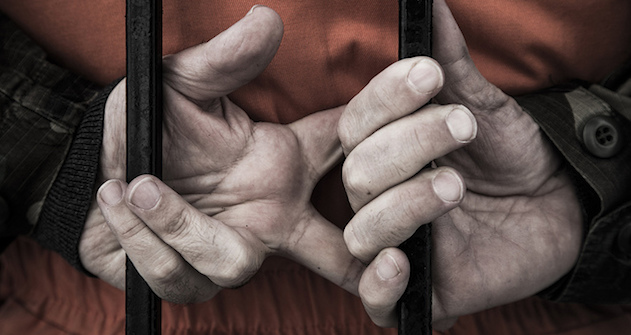The CIA’s Enhanced Interrogation Techniques: Unjustifiable, Brutal and Ineffective

The United States Senate Select Committee on Intelligence has released a report detailing the nature of the CIA’s interrogation techniques employed after the September 11 attacks.
On 5 March 2009, the Senate Select Committee on Intelligence initiated a comprehensive study of the CIA’s detention and interrogation practices. From this, a lengthy and highly detailed report (exceeding 6700 pages) about the CIA’s Detention and Interrogation Program was produced.
This week, the Committee publicly released hundreds of pages from the report, detailing the operation and management of the CIA’s Detention and Interrogation Program from its inception to its termination. This included information on CIA detainees before, during, and after the use of the CIA’s “enhanced interrogation techniques”.
The Committee Chairman Dianne Feinstein noted in her foreword for the report that, while the CIA was encouraged by political leaders to respond swiftly to 9/11, and to prevent any further terrorist attacks, “such pressure, fear, and expectation of future terrorist plots do not justify, temper, or excuse improper actions taken by individuals or organisations in the name of national security”. Feinstein described the CIA’s treatment of detainees and their “brutal interrogation techniques” as “cruel, inhuman, and degrading” – in violation of US law, treaty obligations and US values. Although Feinstein reminded readers not to forget the context in which the CIA’s program commenced, she also cautioned that “the context should not serve as an excuse, but rather as a warning for the future”.
Although the declassified report is less than a tenth of the original, it provides a sound overview of the Committee’s findings and conclusions about the entirety of the program.
The Committee found, first and foremost, that the CIA’s use of enhanced interrogation techniques “was not an effective means of acquiring intelligence or gaining cooperation from detainees”. A reported 39 detainees, subject to these techniques, produced absolutely no intelligence. Many other detainees produced fabricated information.
The Committee also concluded that the CIA’s justification for the use of such techniques rested on “inaccurate claims of their effectiveness”. A review of 20 of the United States’ most prominent purported counterterrorism successes, attributed to the CIA’s enhanced methods, proved to have little or no relationship to the information elicited from detainees during, or after, the use of these techniques. Unverified reports presented by the CIA to the White House, the National Security Council, the Department of Justice, Congress, the CIA Office of Inspector General and to the public gave the false impression that the CIA was acquiring unique information from the use of enhanced interrogation techniques. The reports omitted that the relevant intelligence was in fact obtained from sources other than the CIA detainees subject to these methods.
The report also emphasised the brutality of the CIA’s interrogation techniques, describing them as “far worse” than what was represented to policymakers and others. Prolonged confinement in stress positions, sleep deprivation (up to 180 hours), slapping, shaking, waterboarding (resulting in a “series of near drownings”) and ice baths were used continually despite warnings from CIA medical personnel and lacking credible results. Detainees were also subjected to a “rough takedown”’ in which multiple CIA officers would “scream at a detainee, drag him outside of his cell, cut off his clothes, and secure him with Mylar tape”.
The conditions of confinement were also downplayed by the CIA’s representations. Detainees were kept isolated, shackled in complete darkness, with pervasive loud noise or music. The lack of heat in one facility was even attributed to the death of a detainee. One CIA Officer considered the ‘dungeon’ (a term often used to describe the confinement facilities) as an enhanced interrogation technique in itself.
Further, the CIA repeatedly provided inaccurate information about the program to government and media agencies whilst actively impeding congressional and White House oversight. It avoided briefing the CIA Office of Inspector General on the operation and management of the program. Finally, the program failed to obtain authorisation from CIA headquarters for at least 17 of the detainees who were subjected to these coercive techniques.
119 known individuals were held in CIA custody during this time (at least 26 of which were held “wrongfully”). While the released segment of the Senate report does not include descriptions about the treatment of all known detainees, the extensive information provided in the report concerning detainees Abu Zubaydah, KSM and Janat Gul vividly describes the horrific nature of the program and its interrogation practices.
For many, this report is perhaps not as shocking as it is confirming. It confirms the abuses and mistakes made in the name of national security and the War on Terror. As Feinstein conveyed, the review’s release is intended to “shape detention and an interrogation policies in the future” and to urge US policy to “never again allow for secret indefinite detention and the use of coercive interrogations”.
Decisions are yet to be made about the declassification and release of the full 6700 page study.
Rachelle Saad holds a Master of International Security from the University of Sydney, and she is currently a research intern at the AIIA National Office. She can be reached at rachelle_saad@hotmail.com. This article can be republished with attribution under a Creative Commons Licence.